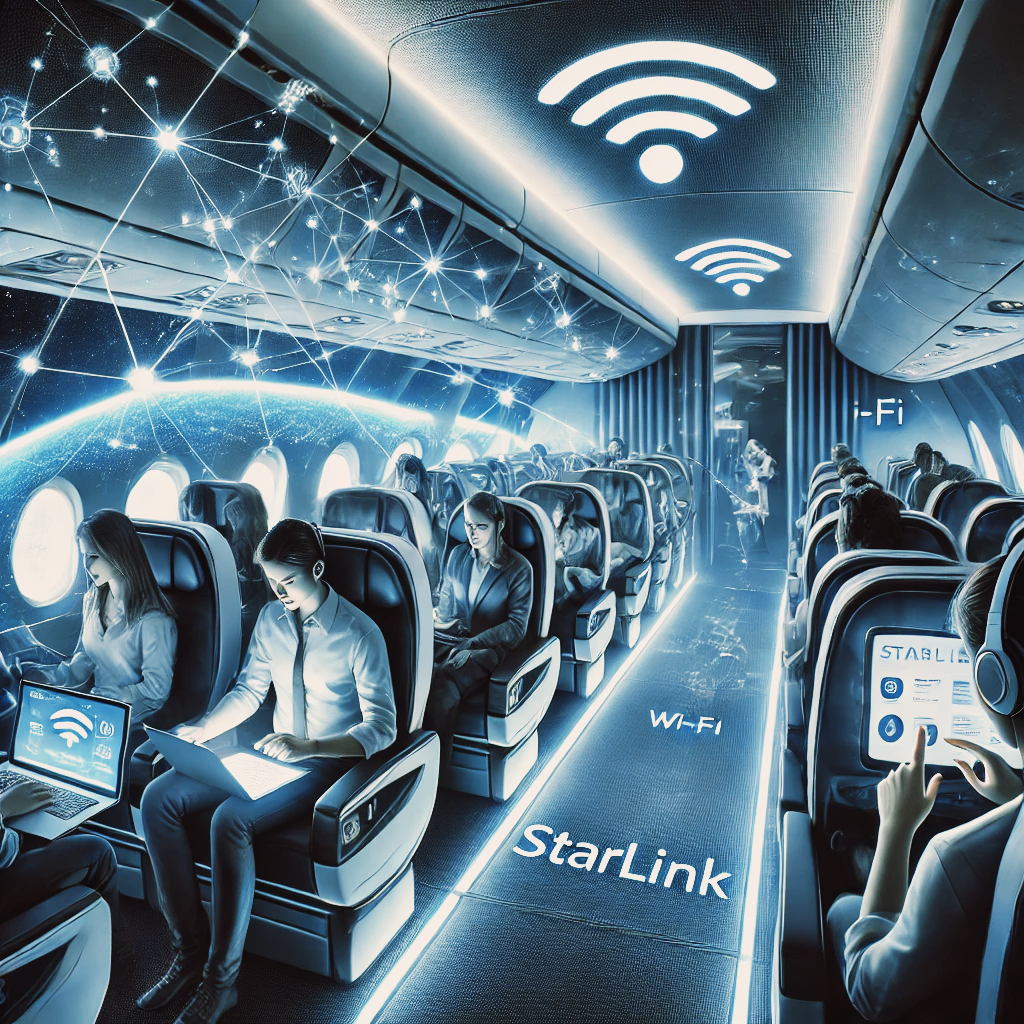The Future of In-Flight Internet: United Airlines Adopts Starlink for High-Speed Wi-Fi
Introduction
The days of sluggish in-flight internet are coming to an end. United Airlines has announced a groundbreaking partnership with Starlink, Elon Musk’s satellite internet service, to offer passengers ultra-fast Wi-Fi at 250 Mbps—nearly fifty times faster than traditional airline internet. This development is set to revolutionize in-flight connectivity, allowing passengers to stream, game, and browse without interruptions.
---
A Game-Changer for Airline Connectivity
For years, in-flight internet has been slow, expensive, and unreliable. With Starlink’s satellite technology, United Airlines aims to change this narrative. Beginning in May 2025, over 300 regional aircraft will be equipped with Starlink, providing a seamless browsing experience in the skies.
What Makes Starlink Wi-Fi Different?
1. Speed: Traditional airline Wi-Fi averages around 5 Mbps, while Starlink offers speeds of up to 250 Mbps.
2. Reliability: Unlike ground-based networks, Starlink’s satellite constellation ensures a stable connection, even over oceans and remote areas.
3. Free Access: United’s MileagePlus members will receive complimentary access, making premium in-flight Wi-Fi more accessible than ever.
---
How This Impacts Passengers
The introduction of Starlink internet will transform how travelers work and entertain themselves during flights. Video calls, HD streaming, and online gaming will now be possible without lag. This upgrade positions United Airlines as a leader in digital innovation within the aviation industry.
---
The Future of In-Flight Internet
With airlines racing to adopt satellite-based Wi-Fi, Starlink’s integration marks a turning point for global connectivity. It sets a new standard for what passengers can expect from in-flight internet, making air travel more productive and enjoyable.
---
Final Thoughts
United Airlines’ partnership with Starlink is just the beginning of a new era in aviation. As more airlines embrace satellite technology, in-flight connectivity will continue to improve, making the skies a seamless extension of our digital world.
The days of sluggish in-flight internet are coming to an end. United Airlines has announced a groundbreaking partnership with Starlink, Elon Musk’s satellite internet service, to offer passengers ultra-fast Wi-Fi at 250 Mbps—nearly fifty times faster than traditional airline internet. This development is set to revolutionize in-flight connectivity, allowing passengers to stream, game, and browse without interruptions.
---
A Game-Changer for Airline Connectivity
For years, in-flight internet has been slow, expensive, and unreliable. With Starlink’s satellite technology, United Airlines aims to change this narrative. Beginning in May 2025, over 300 regional aircraft will be equipped with Starlink, providing a seamless browsing experience in the skies.
What Makes Starlink Wi-Fi Different?
1. Speed: Traditional airline Wi-Fi averages around 5 Mbps, while Starlink offers speeds of up to 250 Mbps.
2. Reliability: Unlike ground-based networks, Starlink’s satellite constellation ensures a stable connection, even over oceans and remote areas.
3. Free Access: United’s MileagePlus members will receive complimentary access, making premium in-flight Wi-Fi more accessible than ever.
---
How This Impacts Passengers
The introduction of Starlink internet will transform how travelers work and entertain themselves during flights. Video calls, HD streaming, and online gaming will now be possible without lag. This upgrade positions United Airlines as a leader in digital innovation within the aviation industry.
---
The Future of In-Flight Internet
With airlines racing to adopt satellite-based Wi-Fi, Starlink’s integration marks a turning point for global connectivity. It sets a new standard for what passengers can expect from in-flight internet, making air travel more productive and enjoyable.
---
Final Thoughts
United Airlines’ partnership with Starlink is just the beginning of a new era in aviation. As more airlines embrace satellite technology, in-flight connectivity will continue to improve, making the skies a seamless extension of our digital world.
